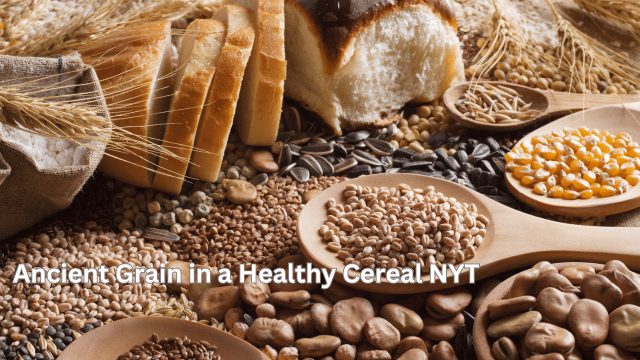In the realm of healthy eating, ancient grain revival has gained major traction, and The New York Times’ recent coverage of this fascinating phenomenon has raised awareness of it. This blog article examines the advantages of using ancient grains in cereals, their role in promoting a healthy diet, and the reasons for their recent rise to prominence in the food sector.
What Are Ancient Grains?
Grain that has been farmed for thousands of years and not much modified is referred to as ancient grain. These include grains like quinoa, amaranth, farro, and spelt, which are not the same as contemporary grains. They are praised for their adaptability, distinct tastes, and nutritional advantages. Ancient grains are frequently less processed and have more of their inherent nutrients than their contemporary equivalents.
The Rise of Ancient Grains in Breakfast Cereals
The trend of ancient grains being added to morning cereals has been getting more and more attention, as The New York Times recently reported. These cereals provide a healthier option to typical cereals since they are made from a combination of ancient grains. These cereals offer a higher dose of protein, fiber, and other vital nutrients by combining grains like quinoa or farro, which makes them a more wholesome option for beginning the day.
Nutritional Benefits of Ancient Grains
Nutrients found in ancient grains are abundant in current processed cereals. Generally speaking, they have high levels of protein, fiber, vitamins, and minerals like magnesium and iron. These nutrients support heart health, better digestion, and general wellbeing. Cereals with ancient grains added improve their nutritional profile and offer a more complete and well-balanced breakfast alternative.
How Ancient Grains Compare to Modern Grains
Ancient grains are notable for having more nutritious value than contemporary grains like processed wheat. Nutrients that are vital to modern grains are lost when bran and germ are removed during processing. On the other hand, ancient grains are not overly processed, so that all of their vitamins, minerals, and antioxidants are still there. They are therefore a more nutrient-dense option for anyone trying to improve their diet.
Popular Ancient Grain Cereals Featured by NYT
A number of historical grain grains that have drawn interest from the public have been highlighted in the New York Times. Nowadays, cereals that showcase the distinct tastes and textures of ancient grains are available from brands. Quinoa flakes, amaranth puffed cereals, and farro granola are a few well-liked variations. These cereals are a tasty alternative to typical morning fare, in addition to offering an added nutritious boost.
Incorporating Ancient Grain Cereals into Your Diet
Ancient grain grains are easy and adaptable to incorporate into your diet. They may be used to baked products or used as a basis for granola bars. They can be eaten as a morning cereal with milk or yogurt. Ancient grains are a flexible addition to many dishes because of their robust texture and nutty flavor, which go well with a wide range of ingredients.
Conclusion: Embrace the Benefits of Ancient Grains in Your Cereal
Ancient grains are a step in the right direction toward a more wholesome and nutritious diet when they are added to nutritious cereals. The New York Times has emphasized the several health advantages that these grains provide, including enhanced nutritional profiles and intestinal wellness. You may get the advantages of these ancient grains while starting your day with a tasty and wholesome breakfast by include ancient grain cereals in your diet.











